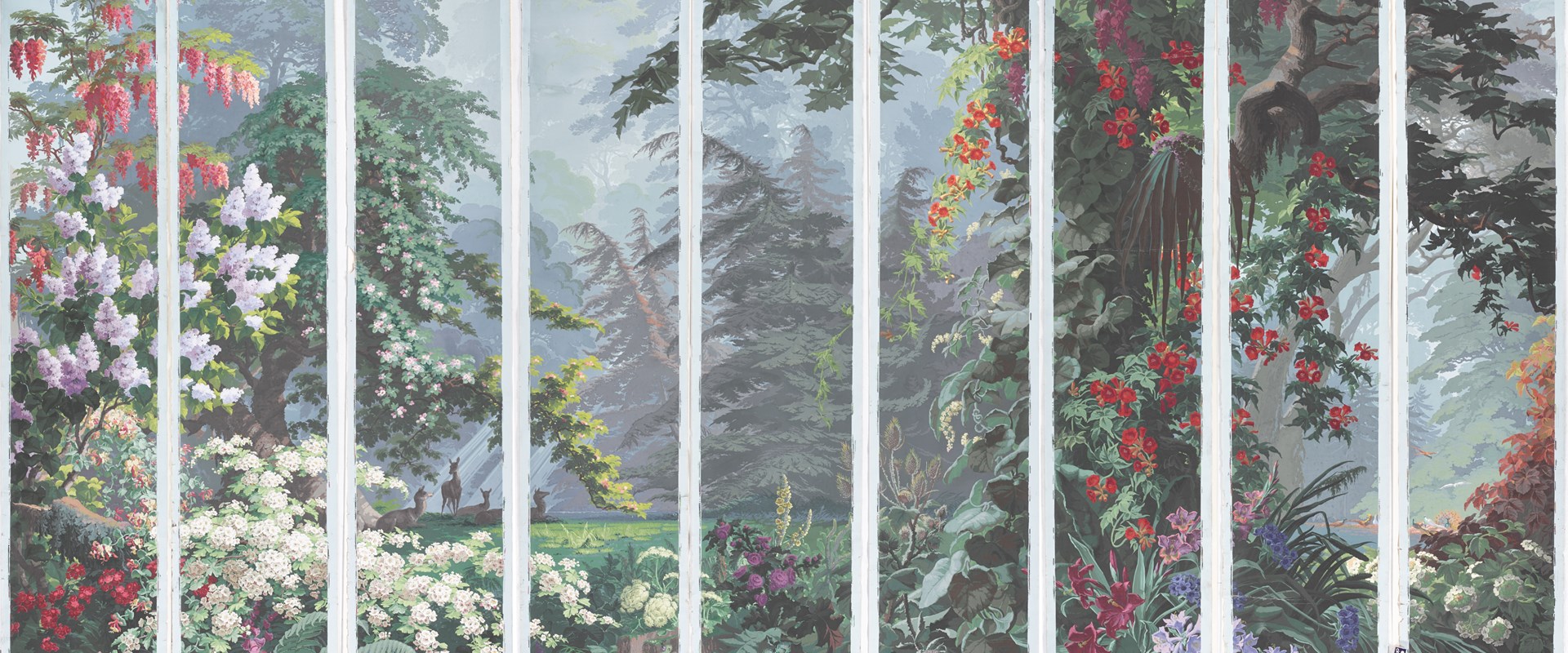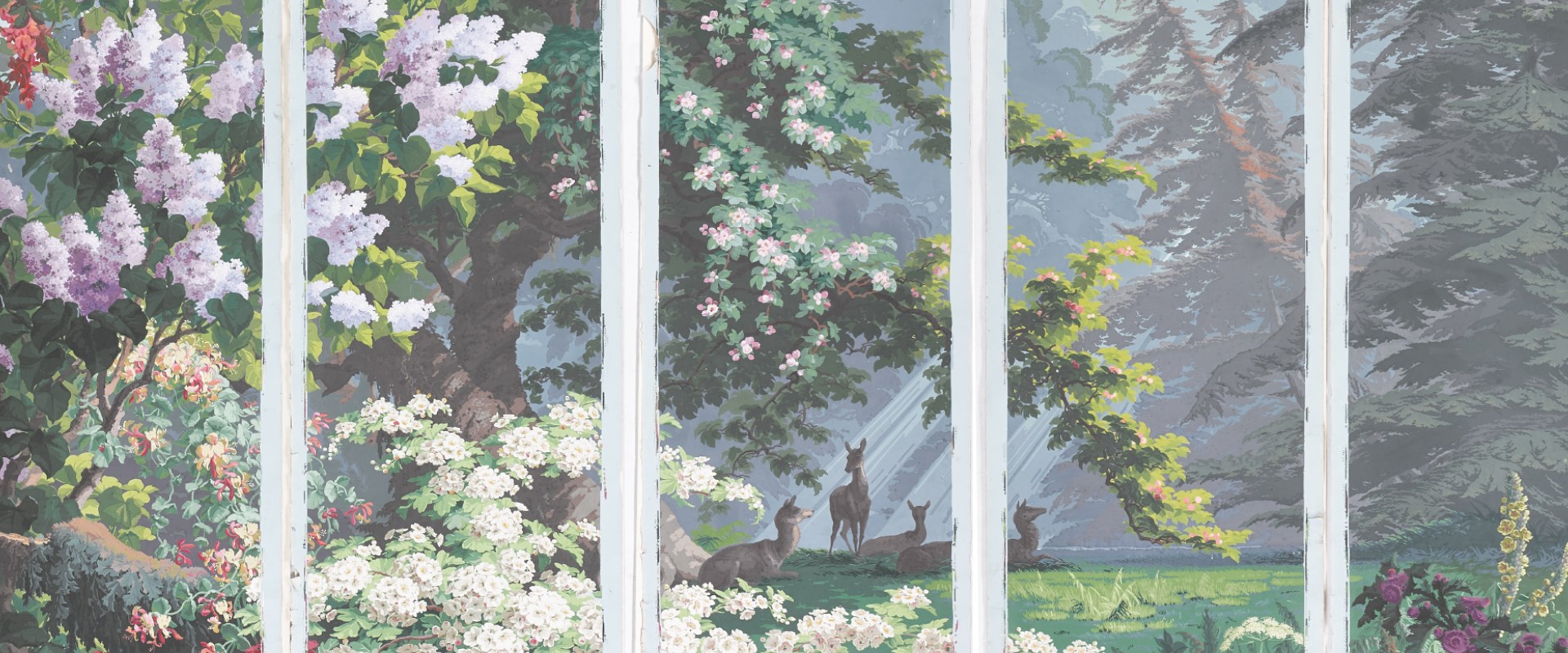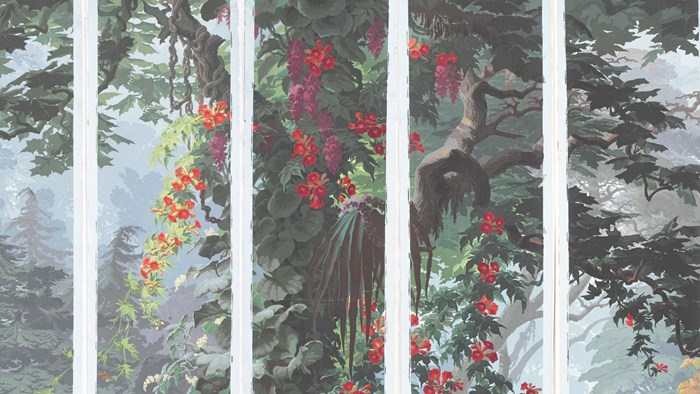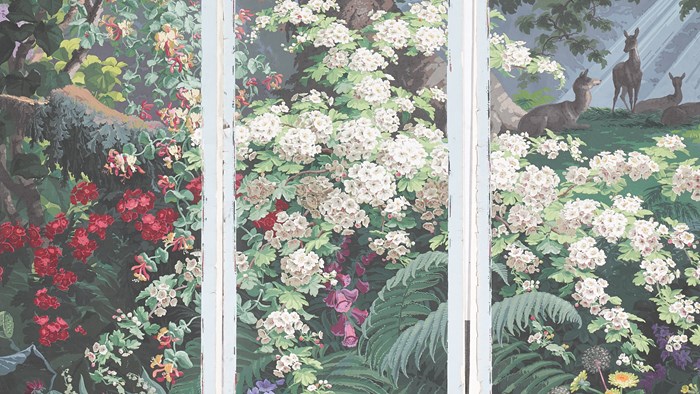Key in a search term below to search our website.
Key in a search term below to search our website.

Uncover the landscape of L’Éden, a set of 20 rolls of 19th-century scenic wallpaper and discover how this spectacular wallcovering has been conserved by the Museum.
Date
First edition 1861, reissued 1872
Made by
Defossé
Made in
Paris
Designed by
Joseph Fuchs
Museum reference
On display
Design for Living, Level 5, National Museum of Scotland
Did you know?
The wallpaper may have been exhibited at the London International Exhibition of 1862. A French review of the Defossé stand mentions ‘A very large painting representing a virgin forest which is most beautifully executed.’
Panoramic or scenic wallpaper consists of several rolls which, when pieced together, create a complete picture. It came into vogue in the 18th century, particularly in France. Extremely expensive and luxurious, it featured only in the richest of homes, as a means of displaying wealth.
Most panoramic wallpaper depicted exotic, overseas scenes, a way of bringing the fantasy of travel, escape and unknown experiences into the home. Like dioramas, such wallpapers were the ‘cinematic’ entertainment of the day, particularly for inhabitants of the increasingly urbanised cities.

L’Éden is a representation of an earthly paradise with no seasons or geographical boundaries. Plants such as lily-of-the valley, viper’s bugloss, Alpine carnations, Caucasian scabious, Clivia, Peruvian amaryllis, Amazonian bromeliads, Indian Lotus, European water lily and Japanese hydrangea, not to mention oaks, cedars and palms, all exist together in this fantastical Edenic world.

This vision of paradise, draws on any number of mythic traditions. However, the range and choice of the flora depicted was informed and enriched by contemporary botanical exploration, and also recent advances in the acclimatisation of exotic plants in the glass houses of Europe.

This film explores the history of the wallpaper and goes behind the scenes at the Museum, to reveal how we conserved and prepared it for display.
The wallpaper is on display in the Design for Living gallery at the National Museum of Scotland. To protect this delicate exhibit, we rotate the wallpaper rolls, showing four at one time. You can scroll through all 20 rolls here, to uncover the exotic landscape depicted in the design.
The French panoramic wallpaper is one of several luxurious wallcoverings to be found in the National Museum of Scotland. This slideshow displays a few more.